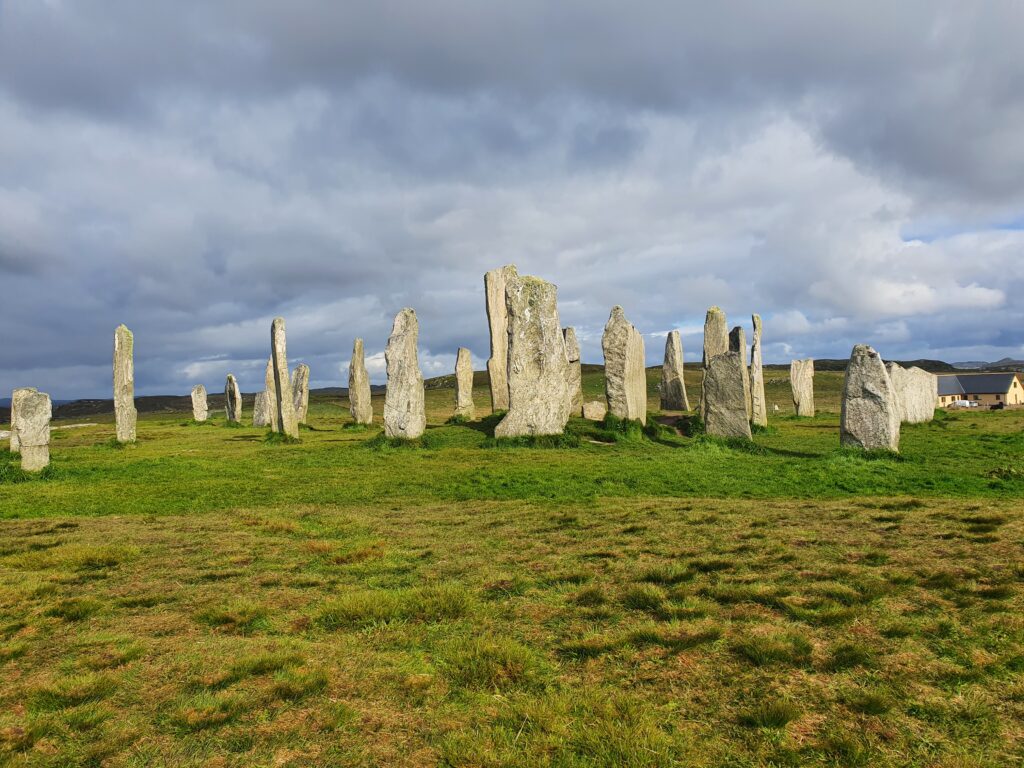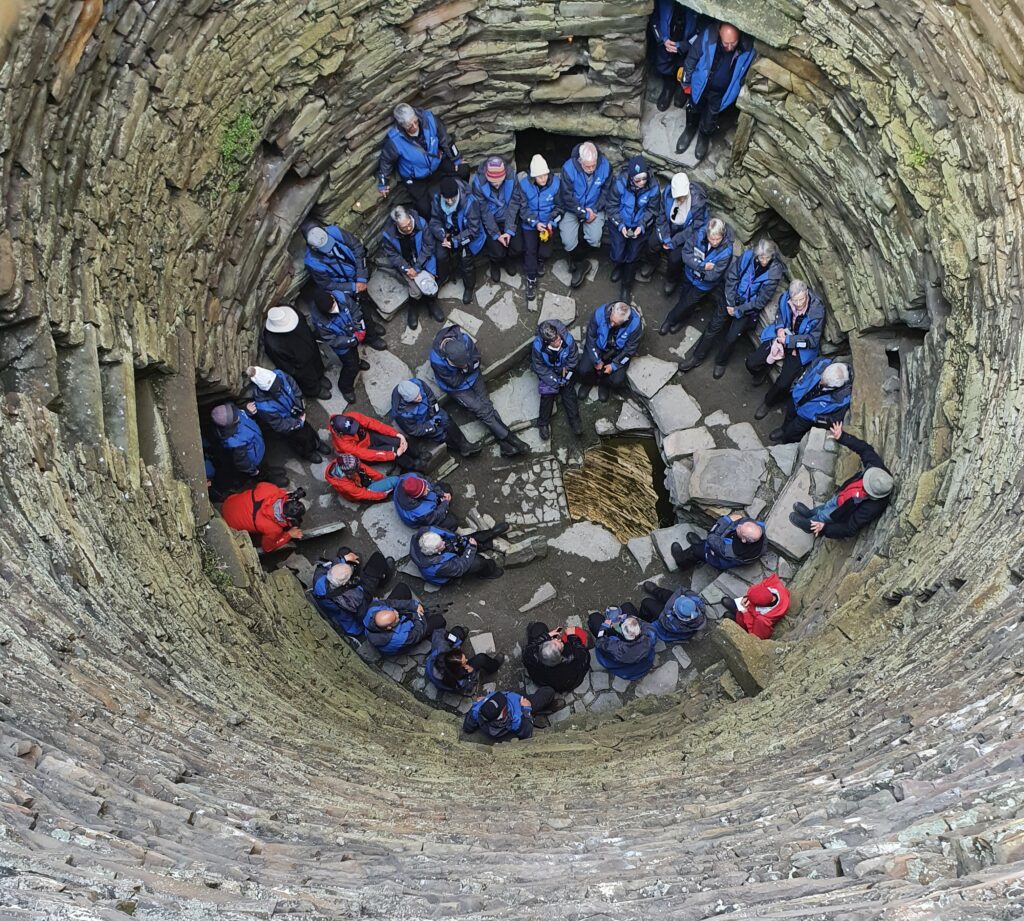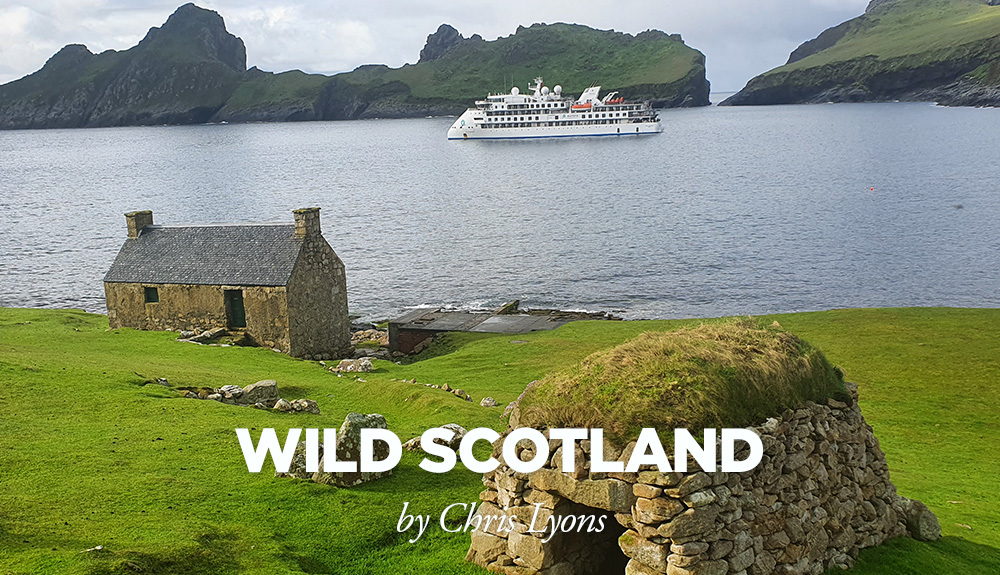
When you think of Scottish cities, Edinburgh and Glasgow will probably come to mind. But the country has so much more to offer its visitors, especially for those looking for picturesque landscapes, wildlife and fascinating history amongst the some 790 harsh and often remote islands that lie in Scottish waters.
Along with 70 fellow guests, I spent 12 days cruising the wild islands in the far north of Scotland. I was amazed by the local wildlife and ancient history in the region – places that would make any historian or nature enthusiast envious.
The tour started in Edinburgh where I had the opportunity to discover this enchanting city and visit magnificent Edinburgh Castle. Later, our group enjoyed a two-hour drive from Edinburgh to the small west coast port of Troon to board the wonderfully designed expedition vessel the Greg Mortimer, named after the founder of Aurora Expeditions. The ship sailed in beautiful calm conditions, which remained the case throughout the cruise. We were very lucky, as in these latitudes even in high summer, light winds and sunshine cannot always be guaranteed!
Next morning our group went ashore for the first excursion to the very picturesque and historic island of Iona. White sand beaches and an incredible combination of colours and tones make Iona a little paradise amongst the other islands. It was also there, in 563AD, that St Columba led a group of Irish monks to settle and begin the spread of Christianity throughout Scotland and England. They established a monastery that became a great centre of art and learning in Iona. The magnificent Book of Kells, one of the greatest Christian manuscripts ever produced, was probably written there.
Visitors also encounter stone-carved Celtic crosses, the most impressive of which, St Martin’s cross, stands today outside the Iona monastery that was visited as part of the tour. Viking raids began to affect Iona in the 9th century AD but some 300 years later a Benedictine Abbey and a nunnery were established, ruins of which remain to this day. A tiny population of some 130 people live on the island, which offers the visitor an excellent insight into a typical West Highland community.
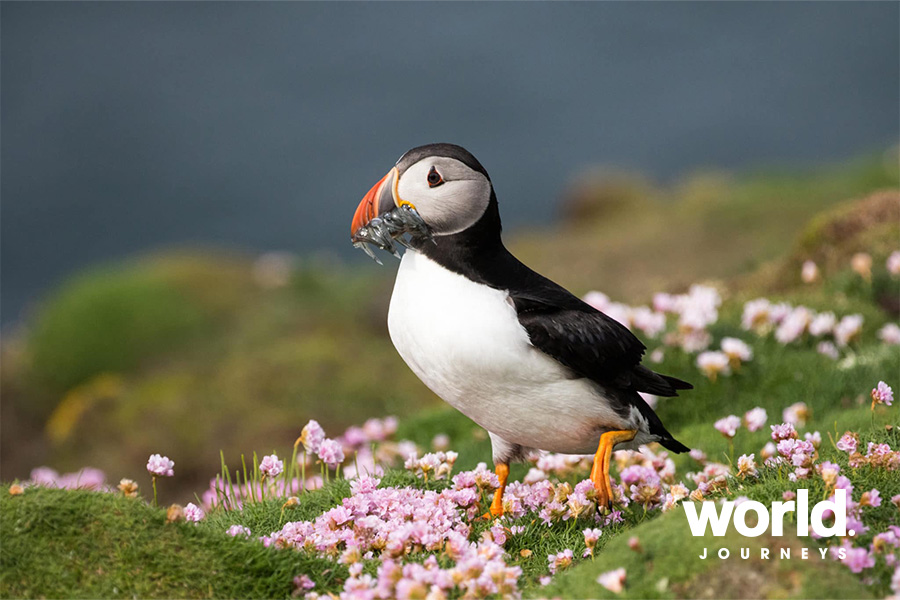
We were very lucky, as in these latitudes even in high summer, light winds and sunshine cannot always be guaranteed!
Chris Lyons
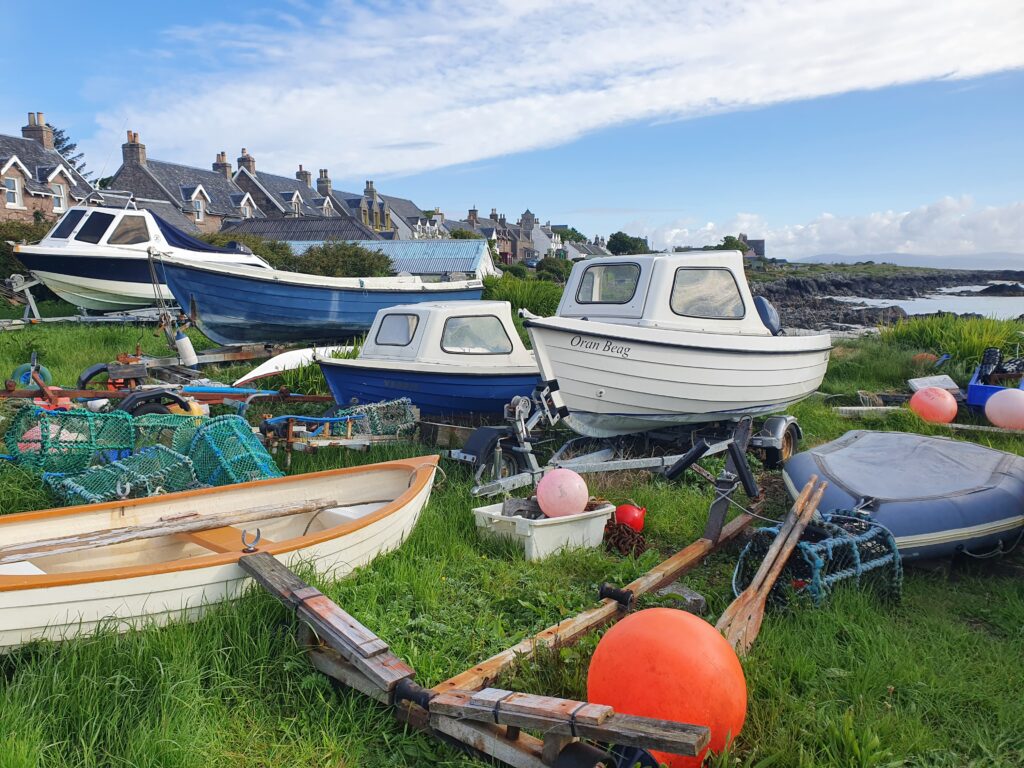
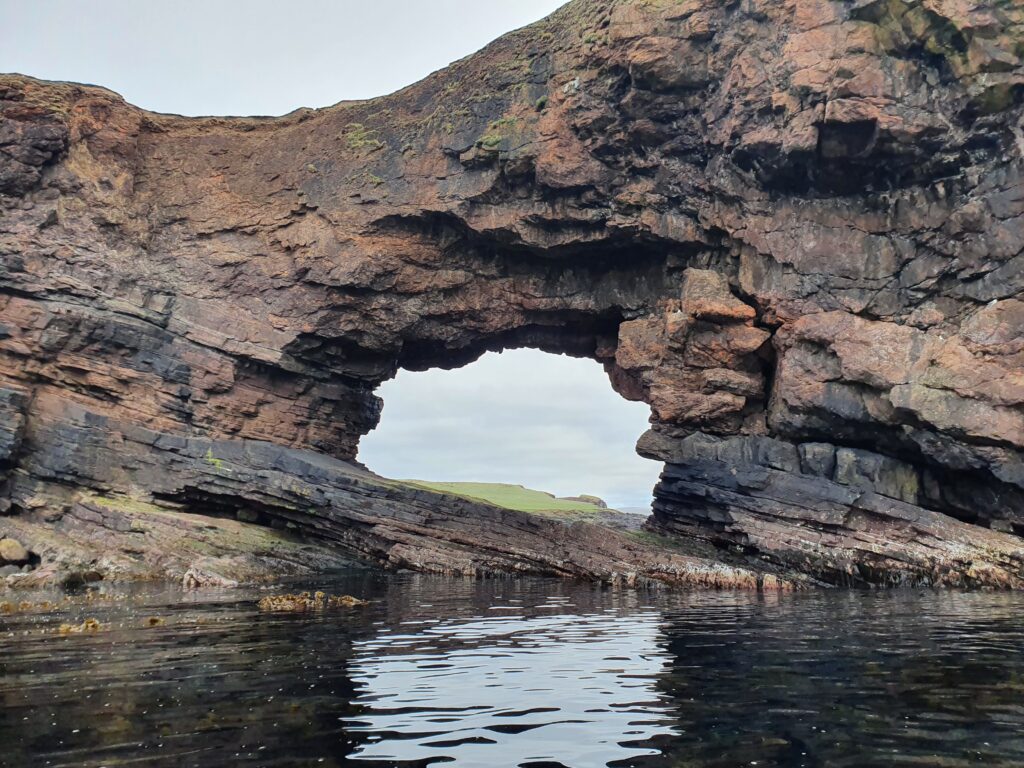
Wildlife and historic wonders
Scotland is also home to a variety of wildlife including native mammals and birds. At the rugged island of Staffa where prolific sightings of the delightful puffin birds abound, much to the delight of all. A zodiac ride into the cathedral-like Fingal’s Cave, set into a sheer rock face on the island, was a blast! At many islands there were enormous concentrations of gannets, guillemots, terns, cormorants and auks. The bird watchers on board were in paradise, that’s for sure!
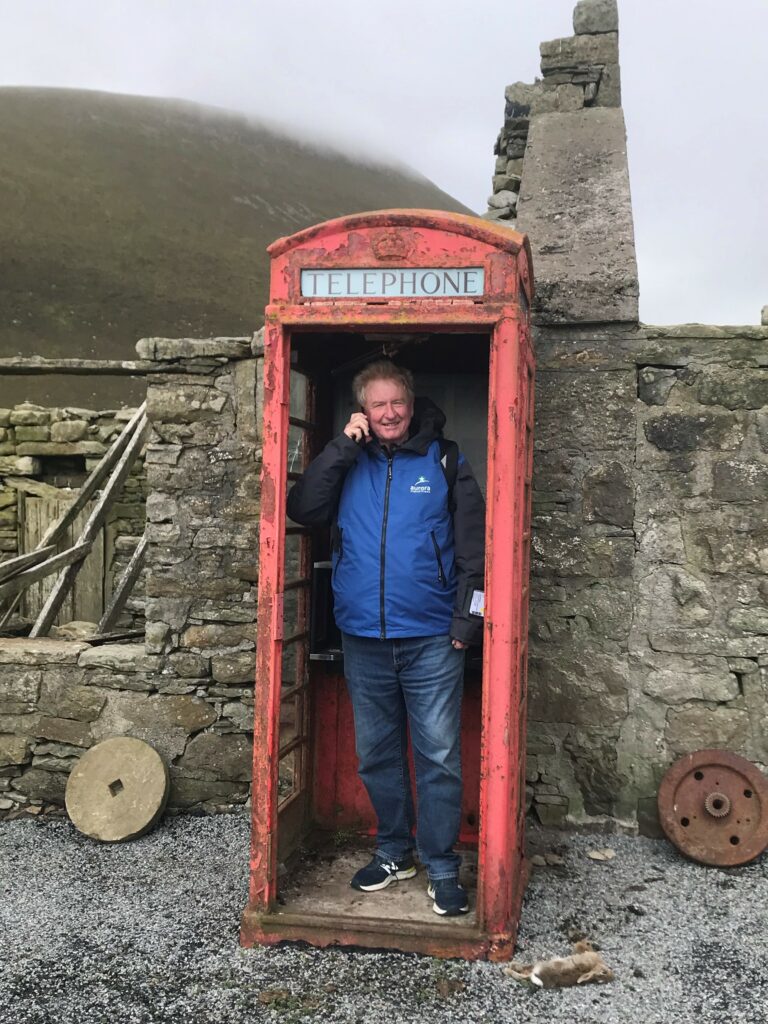
The next day it was onto Lewis, and an early morning welcome by dozens of common dolphins escorting the ship before we dropped anchor. Minke whales were also sighted off the stern of the ship. A highlight of the Lewis visit was the Neolithic Calanais standing stones – an impressive circle of stones erected around 4,000 years ago, which was an introduction to some of the civilizations that have thrived in the far north of Scotland since ancient times.
The next stop was to the tiny island group of St Kilda, situated in the Outer Hebrides and the western most outpost of the British Isles. The island was a real highlight for me, as the expert on board historian explained all about the history and life of the islanders.
The first evidence of human occupation on the windswept island of Hirta dates back around 5,000 years, but life flourished from the Bronze Age onwards. The islanders lived as crofters in rudimentary huts and raised sheep and some grain crops. Dotted all over the island are small stone buildings known as creits, which double as storehouses and a place of refuge when the (at times) dreadful North Atlantic weather gets particularly bad and you are not close to the safety of your croft. The island was eventually abandoned in 1930 when the remaining 36 souls were relocated to an easier life on islands closer to the coast. Nowadays, there are a few scientists, historians and contractors working for the UK Ministry of Defence who live on Hirta.
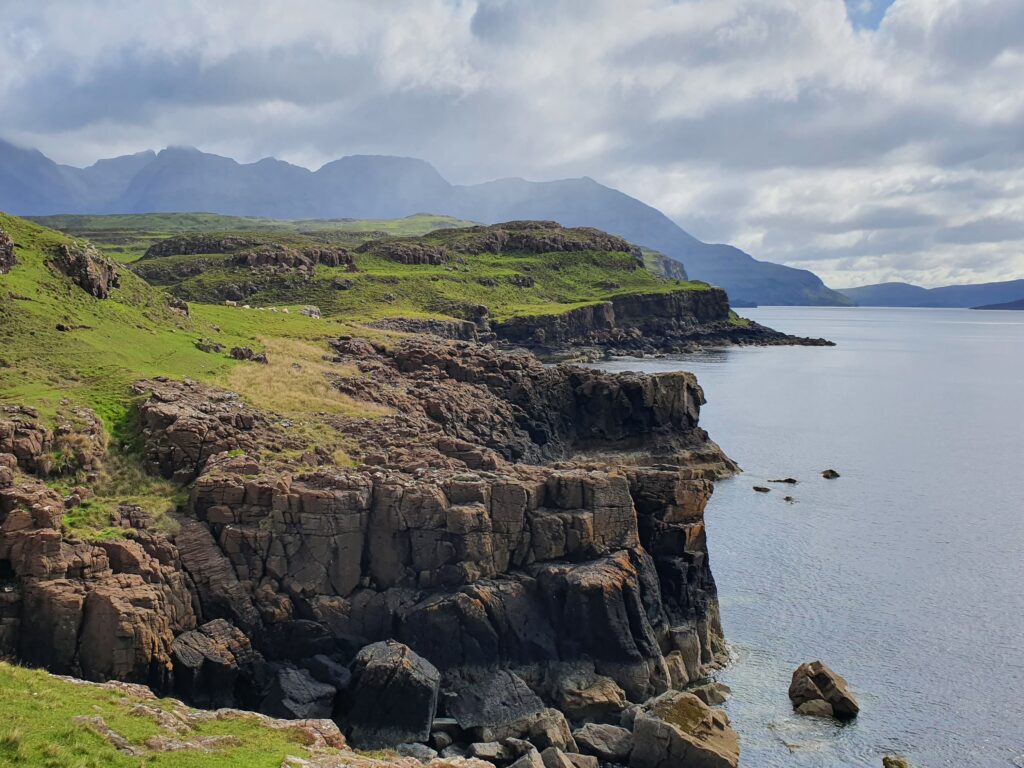
The cruise also took guests to the isles of Foula, Papa Stour, and more of the Shetland and Orkney Islands before ending in Aberdeen. Most islands very remote and uninhabited but still offer the visitors, breath-taking views, green valleys, unique rock formations and untouched nature. Along the way, they also visited the Broch of Mousa, in the Shetland Islands. This impressive cylindrical structure is similar to what Machu Picchu, Angkor Wat and the Pyramids represent historically. Of course much smaller, but in its way, a true gem of neolithic workmanship.
Speaking of workmanship, the small settlement of 42 souls on Fair Isle was another interesting stop. They sell enormously expensive Fair Isle knitwear – $100 for a knitted hat – $600 for a full jersey! Yet, you can see why the knitwear is expensive as it is very slow to make and of beautiful quality. They laid on a morning tea in the community hall which reflected just how friendly everyone we met on these remote islands were. Fair Isle was also a great spot to view a wonderful display of hundreds of delightful Puffins nesting in burrows on the grassy cliff edge. Their personality is infectious.
Cruise review
The 12-day Scottish cruise was outstanding and particularly suited those interested in remote islands, wildlife and history. The 17-strong Expedition team on board contained a vast amount of knowledge and expertise they were only too happy to share with the guests.
The cabins were remarkably spacious and very well appointed, with the bathroom and excellent shower being amongst the best of any ship I have sailed on. There are some great public areas aboard including a very well stocked library full of books and games, and a couple of large bars including one with sensational views. The meals on board were good and drinks were included with your a la carte dinner.
A top-quality expedition cruise which I would highly recommend to future travellers.
Additional info and links here
A top-quality expedition cruise which I would highly recommend to future travellers.
Take a look at our other small-ship expedition-style cruising with Aurora Expeditions:
Wild Scotland, 12 days from Edinburgh to Aberdeen, May
Spirit of Antarctica, 12 days return cruise from Ushuaia (Argentina), with departures Oct/Nov/Dec/Jan
